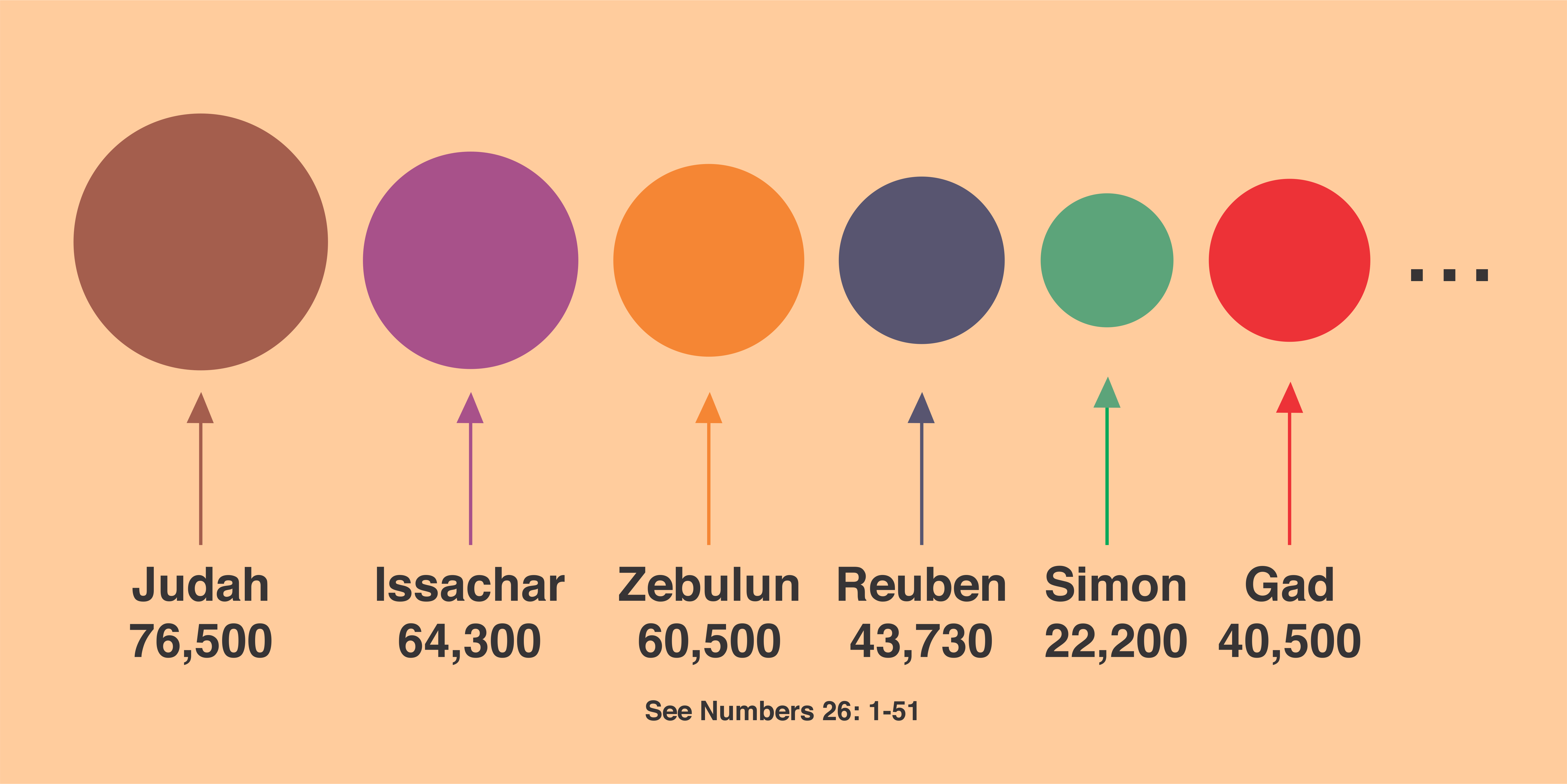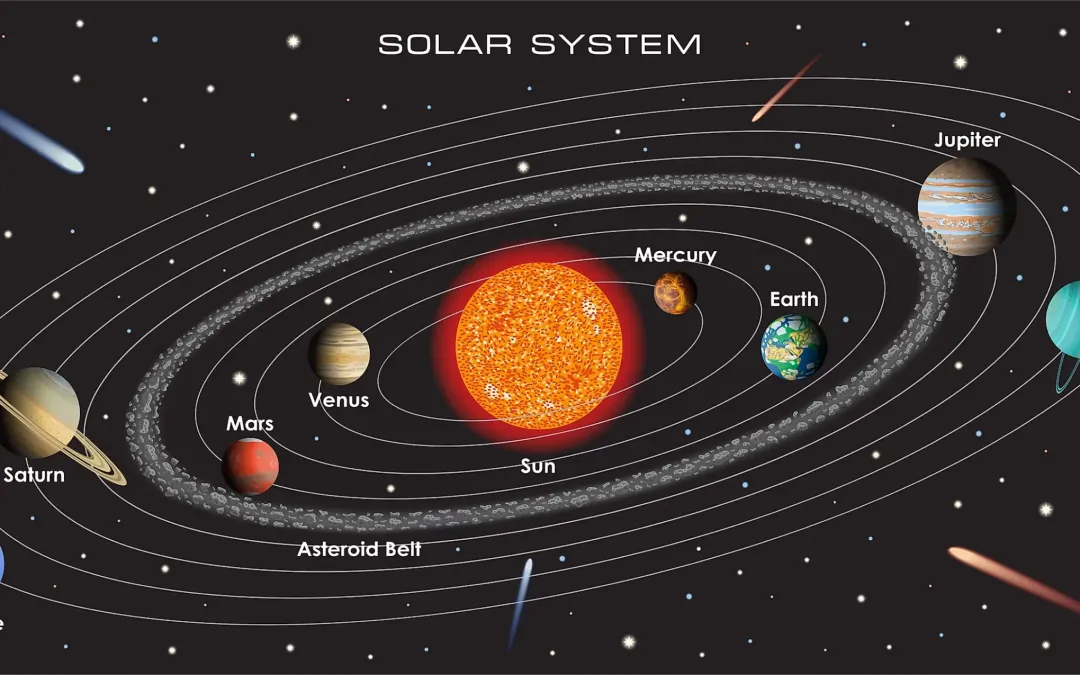A response to the listing “Planet-X: Introduction” got me thinking anew on the subject. The responder argued that going by scientific evidence, there ought to be more than twelve planets. With this in mind, I took a fresh look at my diagram and reviewed the documentary, Solar System, which talked about the inner and outer planets. I realized that if I represented the families of the children of Levi with bubbles, as I did for the tribes, it would certainly give the sense of inner and outer planets. Huh! The agreement doubles even in the fact that the inner planets are made of rocks, which agrees with scripture in that Christ is that Rock. That is, the Church (the body) and Christ (the head) is the Rock, the power of God (I Cor. 1:24). The book of revelations also says that in the new world there will be neither the sun nor the moon, but God will be the light of it (Rev. 21:23). And Jesus said, “I am the light of the world.”
An overview of the Solar System brings many more facts into focus. It shows that the boundary between the inner and outer planets contains most of the asteroids, like a barrier between them, with quite a stretch of space on either side of it. Compare this with Numbers 2:2 and Luke 16:19-26. Also, Jupiter the biggest planet follows closely after the gap, just as is the tribe of Judah with the largest population in my diagram. Recall that in the procession, the camp of Judah was to break camp first (Num. 2:9).
The portion of the document under ‘classification’ had four planetary groups referred to as the inner planets, i.e., Mercury, Venus, Earth, and Mars; just as there are the families of the children of Levi – Kohath, Gershon, Merari, and Moses/Aaron & sons around the Ark of the Covenant in my diagram. Notice that the ordering of the Solar System affirms Rom. 1:20. It reveals the order of “the kingdoms of our Lord, and of His Christ” (Rev. 11:15), at which time God would subdue all things under his feet (1 Cor. 15:25). Also, in accordance with Ezekiel 16:53, 55, the twelve outer planets represent the nations, that is, Sodom and her sisters, whose captivity is to be returned along with the captivity of Israel – but not by the new covenant of the Church of Jesus Christ (Eze. 16:61; Jer. 31:31). This will culminate in the reconciliation of all things by God, according to Colossians 1:20. How this would transpire is addressed under the subtitle, The Lake of Fire: Second, or the Final Death?
- The inner planets, they say, are made of rocks; and by comparison, are akin to the saints of God – washed in the blood of Jesus: consecrated, and so can abide the holiness of God, as was the Levitical priesthood.
- The outer planets are composed of gases (i.e., the twelve tribes) Not consecrated.
Taken further, the sense of inner and outer planets tallies with the manner in which the temple at Jerusalem, or the tabernacle that Moses built in the wilderness was sectioned. Only members of the Levitical priesthood which the Church replaces (Revelations 1:6) could access the inner sanctuary (Rev. 21:27). The outer sanctuary was for the rest of the tribes (i.e., the nations). Compare with Revelation 11:1-2: “…the court, which is without the temple leave out, and measure it not; for it is given unto the Gentiles.”
Notice also that the inner planets, in proportion, are much smaller compared with the size of the outer planets. This agrees so plainly looking at the population figures from the second census conducted by Moses just before they entered the Promised Land. The family of Kohath is 8,300, Gershon 7,500, and Merari 6,200; compared with Judah 76,500, Issachar 64,300, or Zebulun 60,500 etc. The inner and outer planet is illustrated by the 12-planet diagram. The diagram labels 12 planets, counting the sun and moon (Luna) as well as the 9 known planets, and ‘Nibiru’ or planet-X. Especially note the Asteroid Belt in this diagram.
If you place the bubbles for each of the tribe side by side, and in the sequence in which they were to break camp (Num. 10:5-6), beginning with the tribe of Judah, you will notice that they are in size, correspondingly proportional to the outer planets. Simon with the smallest population becomes Pluto; and Gad becomes planet-X in that order (See diagram below). Notice also that the size of Nibiru as Gad deviates a bit in the sequence because the size of Planet-X was not certain when this diagram was made. It will bring the total number of the outer planets to twelve, beginning with Jupiter, as is the tribe of Judah. A similar pattern exists for the inner planets as well. View the complete diagram.

Have questions or comments
Please use the form to the side

